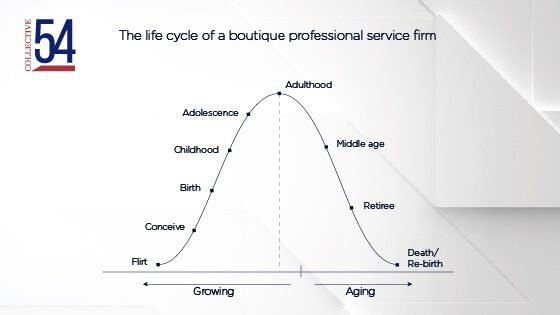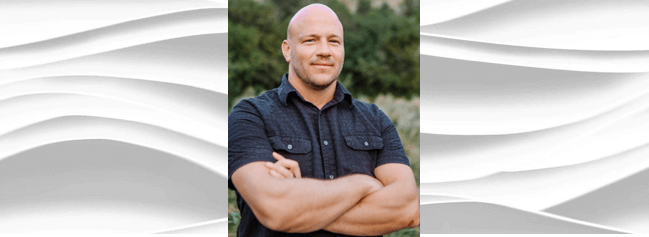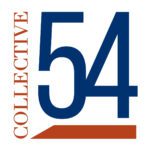Win/Loss reviews are a powerful way to improve your sales results. Yet, most members are not doing them because they incorrectly think they are hard to do and require lots of time.
On this episode, Brady Jensen, Chief Executive Officer at Aggregate Insights, an expert in win/loss reviews will give members the method, tools, and templates to allow them to do this correctly, quickly, and cheaply.
TRANSCRIPT
Greg Alexander [00:00:15] Welcome to the Pro Serv podcast, a podcast for leaders of thriving boutique professional services firms. For those that are not familiar with us, Collective 54 is the first mastermind community dedicated entirely to serving the needs, the unique needs of boutique pro serv firms. My name’s Greg Alexander. I’m the founder and I’ll be your host today. And on today’s episode, we’re going to talk about win-loss reviews, what they are, why you should do them, how to do them, how to systematize them, etc. And we’ve got a great guest with us today. His name is Brady Jensen. And Brady really is an expert. And that’s, in fact, this is what his firm does for a living. And he’s going to share a bit of his wisdom with us. So, Brady, welcome to the show. It’s good to see you. Would you please introduce yourself to the audience?
Brady Jensen [00:01:10] Sure. And thanks for having me, Greg. Yeah. So my name is Brady Jensen. I’m the founder of a company called Aggregate Insights. The way that we think about what we do for companies is we help them look before they leap. Folks oftentimes make decisions about how they’re going to operate, their strategies, their tactics, without considering what they don’t know about their market. So we help companies get a window into their market by helping them understand what their buyers want, what folks who have decided to either purchase or not purchase their solution. I think as well as generally understanding the market, the players, the positions, and messages taken by others in the market as well.
Greg Alexander [00:02:03] Okay, fantastic. So we’ll talk about win-loss reviews, a subject I know is near and dear to your heart. So let’s start with the basics. So what is a win-loss review?
Brady Jensen [00:02:14] A win-loss review, from my perspective, is all about taking count on what has actually transpired in your sales processes. So you may be a singular person selling at a firm. Maybe you’ve got a sales team no matter how small or large you are. There’s information that prospects want you to know, and there’s information that they don’t want you to know. And that really perpetuates all the way up to the decision that’s being made. And in many cases, also any sort of postmortem calls you may have with these folks that you’ve built or you build a relationship and reputation with them over time. And people also just don’t like to deliver bad news. So this is all about. Thinking about why you win. Why you lose. What the decisions that go your way look like. What the decisions that don’t go your way look like. To help you understand everything from what’s happening competitively in your market to “Is my message landing with my ICP?”.
Greg Alexander [00:03:19] Okay. And since you’re a member of Collective 54, you know about our membership. So why should a member of Collective 54 care about win-loss reviews and invest the time and effort in conducting them?
Brady Jensen [00:03:35] I think it’s one of those things where. You can fool yourself into thinking that you’re really busy because you’re taking actions in ways that you think will move the business forward. And it’s often very hard in a fast-growth environment to take stock of what’s happening. Are you actually investing the resources, energy, time into putting yourself out there in the market in the right way? Or are you encountering all these headwinds when they when they’re completely unnecessary? If you do make the conscious decision to look back and understand why you’re either winning or losing and the direct result of that should be if you’re doing it right, is a direct lift in your overall win rate as well as shortening sales cycles.
Greg Alexander [00:04:32] Yeah. Okay. Very good. And let’s talk about the how, how do you do them? So one thing you’ve educated me on is there’s a certain way to ask questions that make these things productive. Tell us a little bit about, you know, how win-loss interviews take place.
Brady Jensen [00:04:49] Yeah. So there are a number of theories on how to conduct these best from my perspective after a lot of. Attempts at-bat to do these. We’ve landed on a process that looks somewhat like a jobs to be done. Interview. Clayton Christiansen Harvard, I believe, came up with this way to really think about what the jobs are that an individual or an organization are trying to do that they’ve hired any product to do for them. So we actually use that a modified version of that to talk to our customer because we think it’s just as important to understand what is that first thought that made you think we need to solve some problem? How did you go about evaluating when you were actively looking and considering options? The purchase decision? Obviously you get down to the brass tacks of everything from – Why did you decide to look now? Was there a point that it was clear to you that this solution was either for you or not for you? Understanding everything from outside parties like like references that may also play a part in whether a decision happens or not. So the front part of our guides on this really focus on that type of information. Then we start to understand more around product perception, the competition, and ending with some open-ended questions that allow folks to sharea advice or feedback to the team on items that we didn’t even ask a question about.
Greg Alexander [00:06:45] And when is it best to conduct a win-loss interview or interviews, and how often should they be done?
Brady Jensen [00:06:53] Yeah. So from my perspective, you’ve the, the, the sooner the better. Right. People’s memories tend to fail them over time. And even the way they remember certain events may shift over time. I tell clients all the time that what we are seeking is not the truth, but the perception of the truth from your buyer.
Greg Alexander [00:07:19] Yeah.
Brady Jensen [00:07:20] It’s very hard to one man’s truth isn’t all that helpful, especially when you’re using your internal truth to decide what it means and the perception of your buyer. Perception is what buyers have to go off of when they make decisions that they make. So how often we tend to do them from a client perspective, we have clients who are doing them every, every quarter. That’s what our recommended recommendation is as far as cadence is concerned. If you have the deal flow to be able to do it ten, 15, 20 interviews a quarter if you can, if you don’t have that deal flow, I think a good number to shoot for is a best case. If you go after three losses, you’ll probably get one out of every three that’s willing to have that conversation with you. So sometimes you’re restricted just by the number of overall deals that you’re going through in a given quarter. But that’s normally what we recommend is a quarterly cadence where each quarter we do an analysis on what we’ve seen as well. Combine that with the information that we have learned over time about them to be able to create some historical context as well. So yeah, every quarter up to, you know, we have even larger clients that are probably up 15 to 20 a quarter. There’s some time or cost constraints to doing these, but that tends to give you a pretty good view.
Greg Alexander [00:09:02] Yeah, okay. Sometimes our members, when I advise this and I think it’s a best practice, I’m not sure how somebody can run the firm without it, to be honest. They say, well, we have a really hard time getting people to talk to us because we haven’t lost a deal per se. It’s just been delayed. It’s the project that went away. But the reality is a project never happens many, many times. So. So what’s your response to that? Maybe not a loss, but something that just kind of is in perpetual delay?
Brady Jensen [00:09:34] Yeah, I mean, it’s interesting. We actually catch oftentimes catch prospects in this environment where all of a sudden a conversation with us actually causes them to reengage. Right. It’s delayed. There’s not a whole lot of clarity as to what the next step is. Recognizing that a deal that is near zero at the moment is not going to automatically spring back to life. A lot of times, having that conversation with them may modify it slightly to be a little less direct about the ultimate decision versus where their head is at. But it is surprising how many folks who will tell us, yeah, we’re still considering it’s still a great opportunity to engage with those folks. And surprisingly, they’re there. They’re quite willing to have those conversations, even if you think, “Oh, well, they think we’re still in the sales cycle”. First off, they probably don’t think you’re still on the sales cycle. They’ve pushed you off for six months or whatever. But even if they have, we’ve had real success getting those folks to engage with us.
Greg Alexander [00:10:45] You know, and sometimes I hear from members that they don’t do this because they tried and they couldn’t get anybody on the phone. And normally that’s because that’s not what they do for a living and they don’t know how to get somebody on the phone. But the people that are attempting to do this and they’re getting stuck around responses. What recommendations do you have for them?
Brady Jensen [00:11:06] Well, I would say treat it like a continuation of your sale. Right. Like when we reach out to folks, you’re probably not going to get a great response from that first message or response rate from that first message. It’s all about having some consistency. Continuing to follow up with them. I will say first, we spent a lot of time trying to get these done for no cost at all. You will spend more time and effort trying to get these folks on the on the line for a free call as it would cost you to give them some sort of minor compensation. In many cases, that’s a donation to their favorite charity. In some cases, their favorite charity might be themselves. That’s fine. But as far as that goes, we’ve found that some especially for the losses, the wins, the wins in most cases don’t require any. Right. They have a relationship with you now, but the other folks have decided not to have the relationship. And in most cases, you’ll burn through a lot of time and effort trying to do it the cheap way versus saying, you know what, let’s find an opportunity to provide them some sort of honorarium or donation to charity. Yeah.
Greg Alexander [00:12:29] And let’s say somebody is going to do it and they get to these, you know, five, ten, 15, whatever it is, a quarter, what do they do with the output?
Brady Jensen [00:12:38] I think it’s all about what can you actually bring to life. So there are different schools of thought when it comes to win-loss. I think a lot of programs that I’ve seen sort of end at the here’s the data stage. From my perspective, whether your internal external to the organization, your goal is to connect the dots across these different experiences and find the combinations of data that start to tell a clear story. That is true. All right. We’re not trying to come up with things out of thin air, but it is about connecting those dots and formulating a clear point of view of. Here are the things that are spiking that we’ve never really heard before. Here’s the things that we continue to hear. What does all of this mean? Right. Establish a point of view and then it clear why it matters or those sorts of things. And then it becomes pretty clear at that point, just understanding from a strategic level to then assign out work to responsible parties and win lost. In many cases, it’s going to touch product leaders. It’s going to touch sales leaders, can touch marketing leaders, and making sure that you have all of those folks on your side and playing ball with you is important because ultimately getting anything done in this stuff, I don’t think it’s all that helpful to say, okay, here’s the sales reps, here’s all we learned about why you won or lost last quarter. Right? They’re not at the, they’re not at the pay grade to make the types of sweeping changes that would really move the needle in any significant way. So it’s all about sort of that buy-in as well.
Greg Alexander [00:14:30] Awesome. All right. Well, listen, we’re at a time window here, but I’m really looking forward to the private Q&A session We’ll have with the members one of our upcoming member sessions on Friday. And I’m sure they’re going to have a million questions for you, because I think this is something that people need to do. There’s a perception that it’s a ton of work. You’re going to share some templates and tools and things like that to make it easier. So really grateful for you sharing your wisdom with us today. Thank you so much.
Brady Jensen [00:14:59] Sure thing. Thanks for having me.
Greg Alexander [00:15:01] All right. So for those that are listening here, let me give you a few calls to action. Some members attend this session with Brady. Will get those invites out to you. If you’re not a member and you’re listening right now and you want to meet cool people like Brady, think about joining. You can fill out a contact us form on the website and one of our reps will get in contact with you if you want some more information, more content. I should say two things I pointed to. First is our book, The Boutique How to Start Scale and Sell a Pro Search firm can find that on Amazon. Or if you’re if reading isn’t your thing and you like videos and podcasts and charts and things like that, consider subscribing to Collective 54 Insights. And that is our weekly newsletter. And we push out three pieces of fresh content every week. Okay, Thanks for listening. And until next time, we wish you the best of luck as you try to grow a scale and someday exit your professional services firm.


